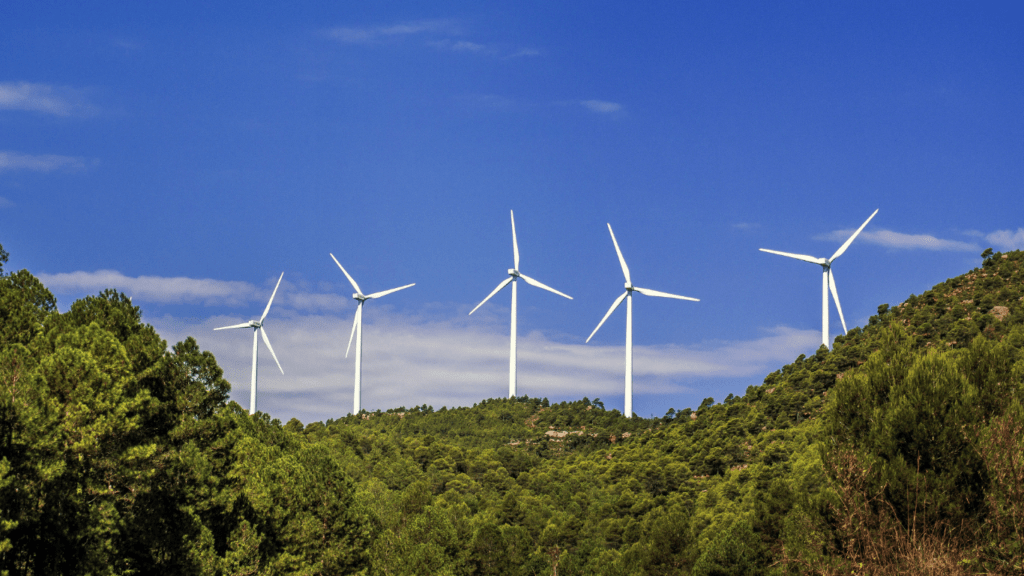As a passionate advocate for sustainable solutions, I’ve been closely following the remarkable progress in renewable energy adoption worldwide. The global shift towards cleaner, more efficient energy sources is not just a trend; it’s a crucial step towards a greener future. From solar and wind power to hydropower and geothermal energy, the advancements in renewable technologies are revolutionizing the way we power our world.
In this article, I’ll delve into the latest developments driving the widespread acceptance of renewable energy on a global scale. With countries setting ambitious targets for carbon neutrality and investing in clean energy infrastructure, the momentum behind renewables is stronger than ever. Join me as we explore the innovative initiatives, policies, and technologies shaping the future of energy production and consumption.
Current State of Renewable Energy Worldwide
Renewable energy has become a crucial player in the global energy landscape. The momentum behind renewables is reshaping how we power the world, with advancements in solar, wind, hydropower, and geothermal energy technologies leading the transition to cleaner energy sources. Countries across the globe are setting ambitious targets for carbon neutrality and making substantial investments in clean energy infrastructure, driving the widespread acceptance of renewable energy.
Global Energy Consumption Trends
I’ll delve into the current trends in global energy consumption to provide valuable insights into the utilization of renewable energy sources worldwide.
Leading Countries in Renewable Energy Usage
Exploring the top countries at the forefront of renewable energy adoption, showcasing their commitment to a sustainable energy future.
Key Technologies Propelling Renewable Energy
- Solar Power Innovations
Innovations in solar power technology have revolutionized the renewable energy sector. Solar panels’ efficiency has significantly increased over the years, making solar energy more accessible and cost-effective. The integration of smart solar solutions, such as solar shingles and transparent solar panels, is transforming the way we harness solar energy. These advancements are driving the widespread adoption of solar power in residential, commercial, and industrial settings. - Advancements in Wind Energy
Wind energy has seen remarkable advancements with the development of larger and more efficient wind turbines. Offshore wind farms, in particular, have gained popularity due to their higher wind speeds and less visual impact compared to onshore installations. The use of artificial intelligence and predictive maintenance techniques has improved the performance and reliability of wind turbines, making wind energy a competitive and reliable source of renewable power. - Emerging Trends in Hydro and Geothermal Energy
Hydropower and geothermal energy are witnessing emerging trends that are shaping the future of renewable energy. The modernization of hydropower plants with innovative technologies like variable speed turbines and pumped storage systems has increased their efficiency and flexibility. Geothermal energy, on the other hand, is gaining momentum with enhanced drilling techniques and geothermal heating applications. These trends highlight the potential for further growth and integration of hydro and geothermal energy in the global renewable energy mix.
Challenges to Renewable Energy Adoption
Transitioning to renewable energy sources faces several challenges that need to be addressed to achieve widespread adoption globally.
Regulatory and Political Hurdles
Regulatory frameworks and political environments play a crucial role in the adoption of renewable energy. Policies that favor fossil fuels or lack incentives for renewable energy can hinder progress. Inconsistent regulations across regions create barriers to investment and deployment of renewable technologies. Political stability and long-term commitments to clean energy agendas are essential for overcoming these hurdles.
Technological and Infrastructure Limitations
Technological constraints and inadequate infrastructure pose challenges to renewable energy integration. The intermittent nature of renewable sources like solar and wind requires advancements in energy storage solutions to ensure reliability. Developing robust grid infrastructure capable of handling decentralized energy generation is crucial. Overcoming infrastructure limitations through innovation and investment is key to maximizing the potential of renewable energy resources.
The Impact of Renewable Energy on the Environment

Switching to renewable energy sources has a direct impact on reducing carbon footprint and mitigating climate change. Renewables like solar and wind power produce electricity without emitting greenhouse gases, unlike fossil fuels such as coal and natural gas that contribute significantly to global warming. By embracing renewable energy on a large scale, we can effectively lower carbon emissions and work towards a cleaner, greener future.
Reduction in Carbon Footprint
Renewable energy plays a crucial role in reducing the carbon footprint of energy production. For example, solar panels harness the sun’s energy without producing the carbon dioxide emissions associated with traditional electricity generation. Wind turbines also generate clean electricity without burning fossil fuels, reducing the release of harmful greenhouse gases into the atmosphere. As more countries shift towards renewables, there is a substantial decline in overall carbon emissions, contributing positively to global efforts to combat climate change.
Biodiversity and Ecosystem Considerations
The adoption of renewable energy sources helps protect biodiversity and ecosystems by minimizing habitat destruction and pollution. Unlike conventional power plants that require extensive land use and can harm wildlife habitats, renewable energy installations like solar farms and wind turbines can often coexist with natural surroundings. By promoting clean energy projects that respect and preserve ecosystems, we can ensure a sustainable balance between energy production and environmental conservation. This holistic approach supports the protection of diverse species and ecosystems while meeting the world’s growing energy needs sustainably.
Economic Aspects of Renewable Energy
As we delve into the economic aspects of renewable energy, let’s explore the cost trends and financial incentives driving its adoption along with the significant impact renewable energy has on job creation and the market.
Cost Trends and Financial Incentives
When considering the cost trends of renewable energy, it’s essential to note the declining costs associated with technologies like solar and wind power. The falling prices of solar panels and wind turbines have made renewable energy more competitive with traditional fossil fuels. Financial incentives provided by governments and organizations further encourage the adoption of renewable energy by making it a financially viable option for businesses and households. These incentives include tax credits, rebates, feed-in tariffs, and renewable energy certificates, reducing the initial investment required for transitioning to clean energy sources. By leveraging these incentives, many entities can capitalize on the economic benefits of renewable energy while contributing to a sustainable future.
Job Creation and Market Impact
Renewable energy adoption not only benefits the environment but also plays a crucial role in job creation and market impact. The renewable energy sector has become a significant source of employment globally, offering diverse job opportunities ranging from manufacturing and installation to maintenance and research. By investing in renewable energy projects, countries can stimulate job growth, boost local economies, and foster innovation in clean technologies. Moreover, the shift towards renewables opens up new markets and business opportunities, driving economic growth while reducing dependence on imported fossil fuels. This transition aligns with the global trend towards sustainable and environmentally friendly practices, positioning renewable energy as a key driver of economic development and market transformation.


